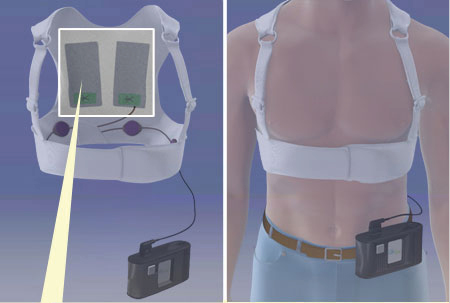Life Saving Device Ends Up Threatening The Lives of Those It Was Intended To Protect

A wearable defibrillator, called the LifeVest, is created to help those who’s hearts often stop on them.
March 4, 2019
Natalie Pezzani, a 15-year-old girl with congenital heart disease has to wear a doctor prescribed “defibrillator” vest, called the “LifeVest”, made by Zoll Medical, that is supposed to help save her life in case her heart fails.
Natalie is on the waiting list for receiving a permanent form of a defibrillator called a pacemaker, throughout the years of waiting for a pacemaker to become available for her, Natalie has gone through many false alarms with the LiveVest, her mother, Rachel Pezzani says “the “LifeVest” has failed half a dozen times and started up for no reason,” and whenever the “LifeVest” starts up it dispenses a “pre-shock” gel that tends to heat up with the actual defibrillator pads, which ends up burning the wearer, and in this case Natalie Pezzani.
The American Heart Association has proven that AED’s save 1,700 lives a year, Zoll Medical reports that their “LifeVest,” even after all the malfunctions, has managed to save some lives as well. The FDA calls these malfunctions “inappropriate defibrillation events.” Zoll, as well as the FDA, warned patients of a “potential lack of treatment, or shock delivery, due to a device failure.”
Zoll’s president took to the website to explain how a software revision “corrected the inappropriate defibrillation events,” but that they are still facing wrongful death lawsuits from families in Florida and Illinois. Families of the patients who died while relying on the “LifeVest” say that the wearable defibrillator failed to deliver a shock during cardiac arrest.
Dr. Mark Estes looked into the situation with Zoll and their “LifeVest.” “There have been instances in which patients have died suddenly with the device in place and there have been questions as to whether the device really detected arrhythmia or not.” A study was held to decide whether or not the “LifeVest” actually did the job it was intended to do, and in the end, the study found that the “LifeVest did not lead to a significantly lower rate of the primary outcome of arrhythmic death.”

